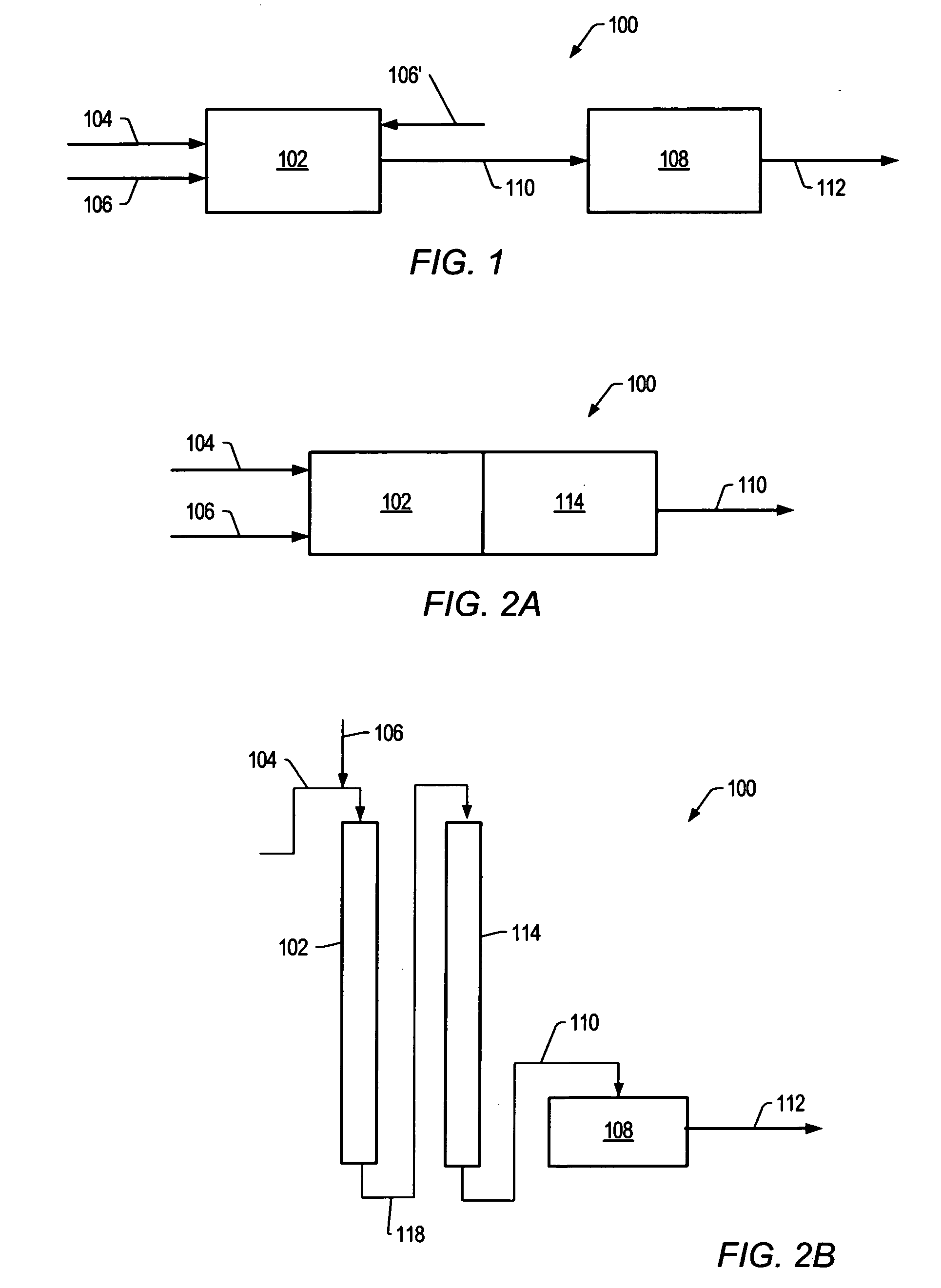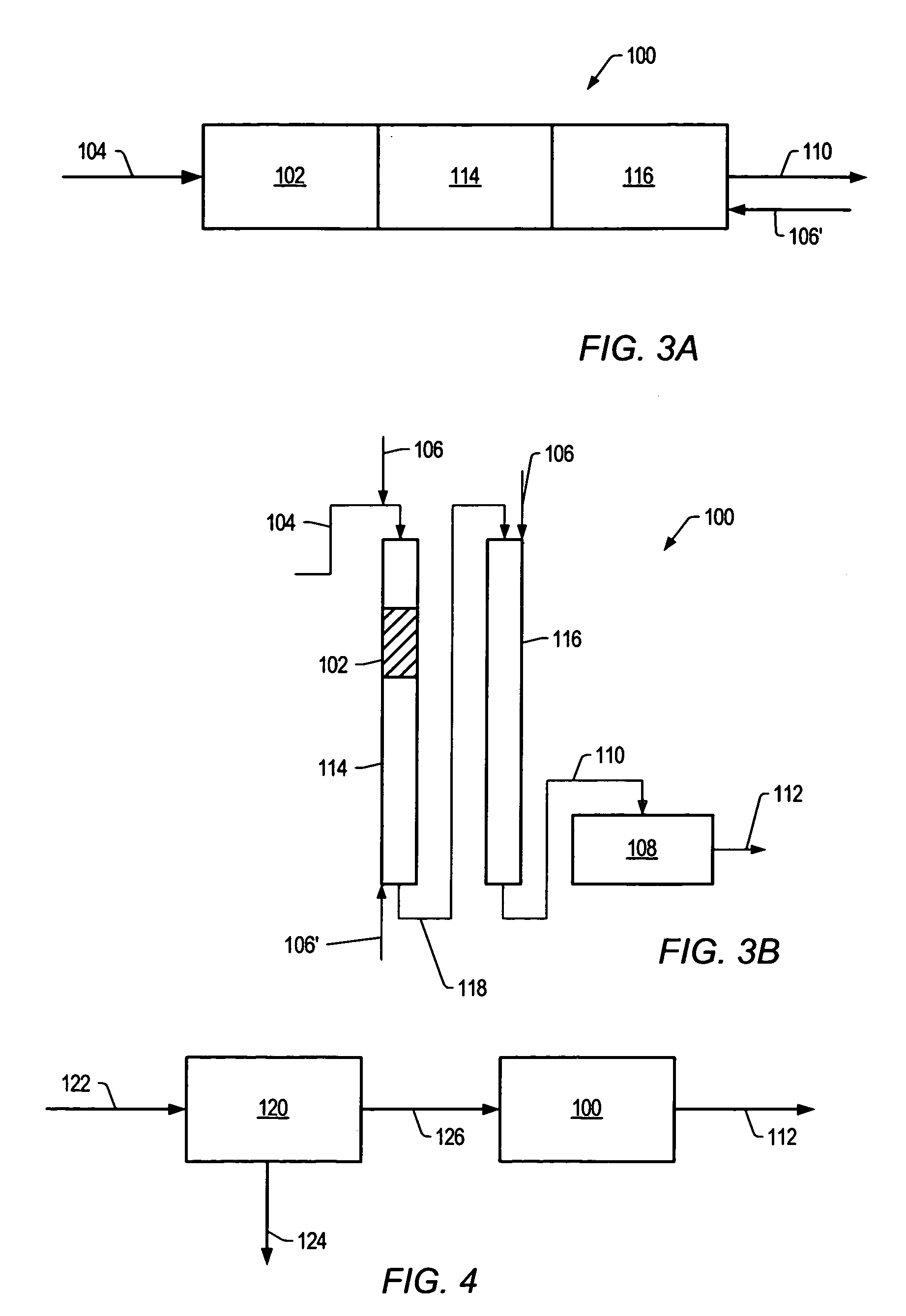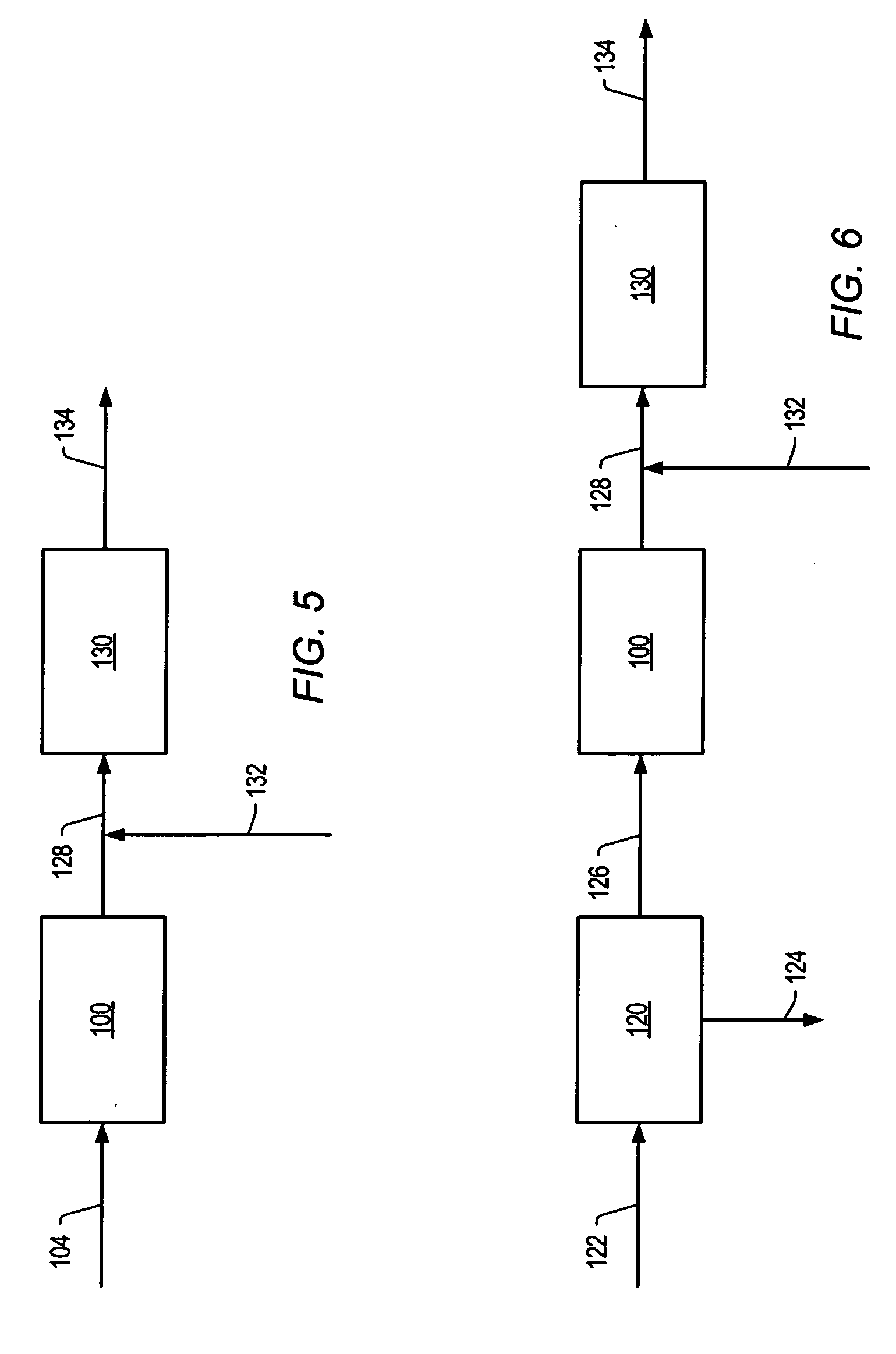Systems, methods, and catalysts for producing a crude product
a technology of crude feed and catalysts, applied in the direction of metal/metal-oxide/metal-hydroxide catalysts, hydrocarbon oil cracking, physical/chemical process catalysts, etc., can solve the problems of high tan, high cost of corrosion-resistant metal, and inability to use corrosion-resistant metal in existing equipmen
- Summary
- Abstract
- Description
- Claims
- Application Information
AI Technical Summary
Benefits of technology
Problems solved by technology
Method used
Image
Examples
example 1
Preparation of a Catalyst Support
[0218] A support was prepared by mulling 576 grams of alumina (Criterion Catalysts and Technologies LP, Michigan City, Mich., U.S.A.) with 585 grams of water and 8 grams of glacial nitric acid for 35 minutes. The resulting mulled mixture was extruded through a 1.3 mm die plate, heat-treated between 90° C. and about 125° C., and further heat-treated at 918° C., which resulted in 650 grams of a support with a median pore diameter of 182 Å. The heat-treated support was placed in a Lindberg furnace. The furnace temperature was raised to about 1000° C. to about 1100° C. over 1.5 hours, and then held in this range for 2 hours to produce the support. The support included, per gram of support, 0.0003 grams of gamma alumina, 0.0008 grams of alpha alumina, 0.0208 grams of delta alumina, and 0.9781 grams of theta alumina, as determined by x-ray diffraction. The support had a surface area of 110 m2 / g and a total pore volume of 0.821 cm3 / g. The support had a por...
example 2
Preparation of a Molybdenum Catalyst Containing Theta Alumina
[0220] A molybdenum catalyst was prepared in the following manner. The alumina support prepared by the method described in Example 1 was combined with a molybdenum impregnation solution. The molybdenum impregnation solution was prepared by combining 4.26 grams of (NH4)2Mo2O7, 6.38 grams of MoO3, 1.12 grams of 30% H2O2, 0.27 grams of monoethanolamine (“MEA”), and 6.51 grams of deionized water to form a slurry. The slurry was heated to 65° C. until the solids dissolved, and then cooled to room temperature. The pH of the solution was 5.36. The solution volume was adjusted to 82 mL with deionized water.
[0221] The alumina support (100 grams) was combined with the molybdenum impregnation solution, aged for 2 hours with occasional agitation, heat-treated at 125° C. for several hours, and then heat-treated at 480° C. for 2 hours. The resulting catalyst contained 0.04 grams of molybdenum per gram of catalyst, with the balance bei...
example 3
Preparation of a Molybdenum / Vanadium Catalyst Containing Theta Alumina
[0223] A molybdenum / vanadium catalyst was prepared in the following manner. The alumina support, prepared by the method described in Example 1, was impregnated with a molybdenum / vanadium impregnation solution prepared as follows. A first solution was made by combining 2.14 grams of (NH4)2Mo2O7, 3.21 grams of MoO3, 0.56 grams of 30% H2O2, 0.14 grams of MEA, and 3.28 grams of deionized water to form a slurry. The slurry was heated to 65° C. until solids dissolved, and then cooled to room temperature.
[0224] A second solution was made by combining 3.57 grams of VOSO4.xH2O (x=3 to 5) with 40 grams of deionized water. The first solution and second solution were combined and sufficient deionized water was added to bring the combined solution volume up to 82 mL to yield the molybdenum / vanadium impregnation solution. The alumina was impregnated with the molybdenum / vanadium impregnation solution, aged for 2 hours with occ...
PUM
| Property | Measurement | Unit |
|---|---|---|
| temperature | aaaaa | aaaaa |
| total pressure | aaaaa | aaaaa |
| temperature | aaaaa | aaaaa |
Abstract
Description
Claims
Application Information
 Login to View More
Login to View More - R&D
- Intellectual Property
- Life Sciences
- Materials
- Tech Scout
- Unparalleled Data Quality
- Higher Quality Content
- 60% Fewer Hallucinations
Browse by: Latest US Patents, China's latest patents, Technical Efficacy Thesaurus, Application Domain, Technology Topic, Popular Technical Reports.
© 2025 PatSnap. All rights reserved.Legal|Privacy policy|Modern Slavery Act Transparency Statement|Sitemap|About US| Contact US: help@patsnap.com



